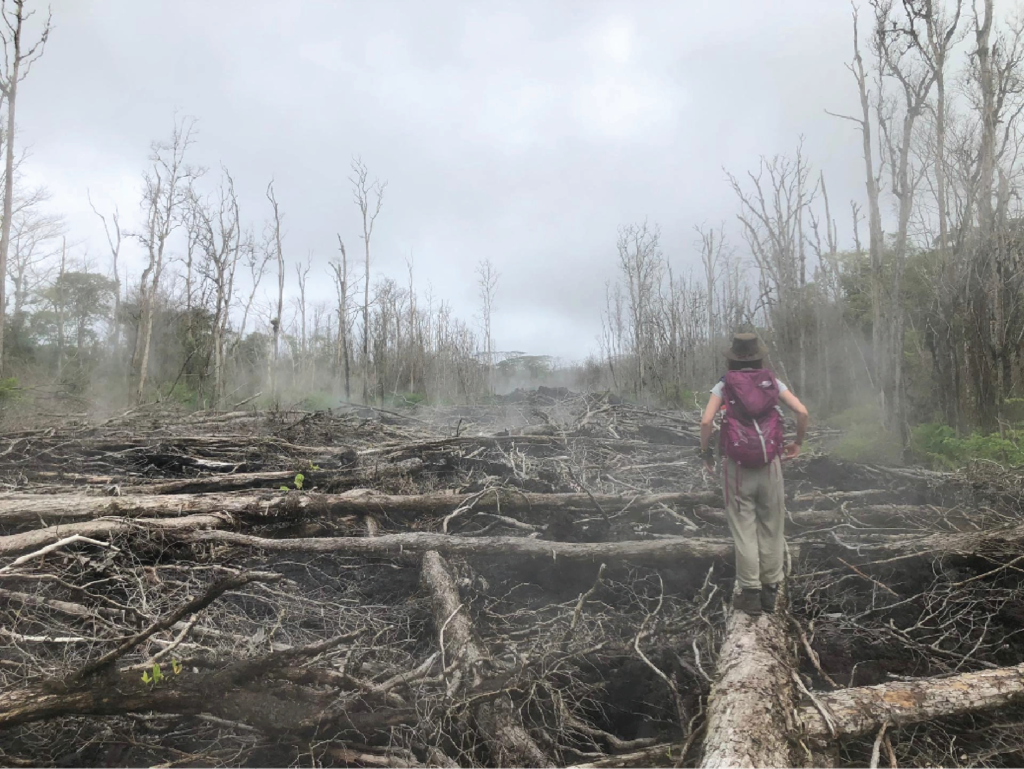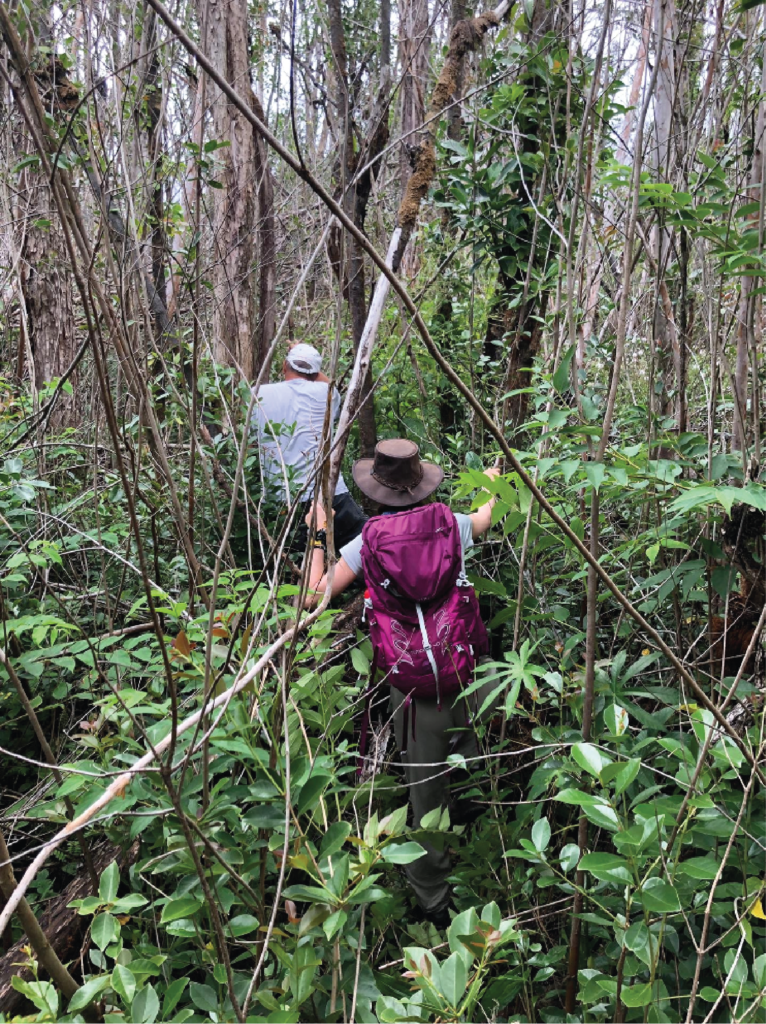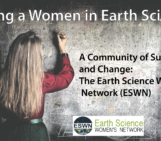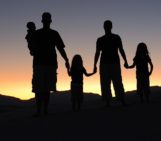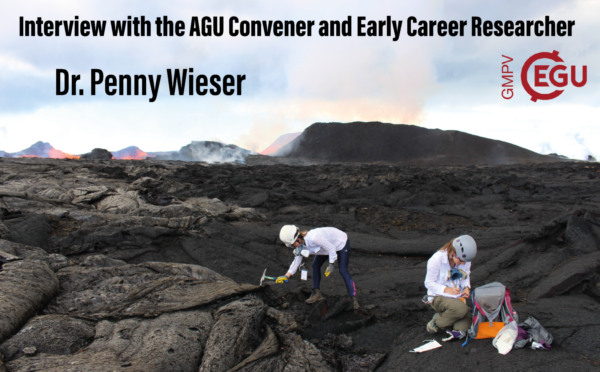
A few months ago, after AGU2020, I had the opportunity to interview Dr. Penny Wieser. Penny is an igneous petrologist and volcanologist with broad research interests and a substantial scientific record. Upon obtaining the undergraduate and masters degree in Earth Sciences at the University of Oxford, she pursued a PhD at the University of Cambridge, which was finished last year. She is now a post-doc at Oregon State University. Be it mantle melting processes, chalcophile element behaviour, melt inclusion studies or collaborating volcanic gas geochemistry studies, her contributions to these fields are undeniable. Furthermore, Penny is quite active on Twitter (I really recommend visiting it!) – her funny and thought-provoking remarks should be in every geologist’s feed. Penny started the interview by sharing her thoughts on having convened a session at AGU2020, later moving to the ableistic policies in scientific conferences and how exciting it is to be a scientist in the age of Twitter. Thank you, Penny!
You were recently a convener of the session “Dynamics of volcanic plumbing systems” at AGU2020. As an early career scientist, what did you take most from this experience?
It gave me a much greater appreciation into how much work goes into convening a session, from reading abstracts, having to choose who to allocate talks (definitely the hardest bit, as there were so many great abstracts and really limited talk slots), as well as getting to grips with the “virtual software” being used. From now on, I will definitely be far more appreciate of the work convenors have put in, and, where possible, thank them after the session!
Speaking of this session, what were in your view the major advances of this field in the last decade, and how do you see it evolving?
I think our session really highlighted 2 complementary advances. Firstly, the continual improvement in micro-analytical techniques (in particular, the rate of data collection) and novel applications of these techniques to volcanology. For example, one of our Invited speakers Cheryl Gansecki presented XRF data that was collected in near-real time during the 2018 eruption, allowing petrology to play an important role in eruption monitoring. We also had a talk from Sam Poppe showcasing his work using 4D x-ray CT scanning of analog models to give us a greater understanding of how geodetic signals relate to intrusion processes. There were many more examples of this in our session, from excellent textural work using modern SEMs, to beautiful LAICPMS maps of zoned crystals.
I think the second, and definitely related advance, is the massive increase in computing power available on personal computers, and a similar rise in computational skills amongst petrologists. This has really opened up new ways of thinking about geochemical data. For example, Rachel Hampton presented a talk using machine learning to pull apart whole-rock data to differentiate between different processes happening in magma chambers. Similarly, Luca Carrichi and Maurizio Petrelli presented a great poster on their recent paper using Machine Learning techniques to develop new mineral-melt barometers. I hope in the next decade we see more of the tools being developed, and shared freely on sites like Github, so that it is easier to reproduce published work, and build on existing code for new applications.
You also attended at AGU to present your doctoral research. What did you present this year?
I presented 2 talks. One was about my PhD work looking at melt inclusions from the 2018 eruption of Kīlauea. By calculating “entrapment pressures” using melt inclusion volatile contents, we show that the dominant phase of the eruption must have been supplied from two separate reservoirs beneath Kilauea’s summit (at ~1-2 and 3-5 km depth-https://doi.org/10.1029/2020GC009364). I also presented work from my masters project looking at the origin of trace element and isotopic enrichment along the Andean SVZ in an “early career innovative session” (https://doi.org/10.1016/j.gca.2019.09.008) This was really fun, as the session was actually live, which made a nice change from all the pre-recorded talks.
You are very vocal on how academic environments regard persons with chronic conditions. Did you feel an improvement on this matter at conferences during this year? How could organisers address this?
I have a chronic Gastrointestinal illness that means I have to closely control my diet, and can’t sit down for prolonged periods. For my particular condition, virtual conferences are a lot easier, as I don’t have to travel, and can control what I eat far easier than when trying to find a restaurant in San Francisco that hasn’t put garlic in any food!
For in-person conferencing, I feel a lot of small changes would make a difference without really costing very much. For example, providing a much greater selection of soft drinks of similar quality to the alcohol options available (I’ve been to conferences where there was only water…). Food put out at poster sessions should be clearly labelled with ingredients (so when you are hungry with a food intolerance, you don’t have to take a gamble). I’ve also had a lot of problems with conference security not letting me stand at the back of rooms because I allegedly present a fire hazard. This has very frustrating as I have always asked permission in advance, and told it will be okay. Being repeatedly kicked out of oral sessions by security has been my overriding memory of international conferences, and has really made me question whether I am welcome in academia. Having a dedicated standing space at the back of conference rooms would be really helpful for a number of reasons (e.g., people with back or circulation problems, anyone wanting to stretch their legs a bit, or join a session for just 1 talk without disturbing a whole row of seated people). At Goldschmidt 2019, a few rooms used for career sessions had high tables at the back (standing-desk esq) which seemed to be quite popular. I felt much less self conscious when other people were standing up with me! Overall, I think it would be great if each society allocated a person in charge of addressing accessibility issues as they arise – at AGU in 2019, the only way I could get anyone’s attention was angry tweeting, which wasn’t ideal.
I hope that in the future, as a community, we can think of really clever ways to blend live and virtual conferencing, to help people with disabilities be able to take part in these events more easily.
It is very common to find scientific discussions among geologists on twitter. How relevant do you find this platform to reach out to other scientists and exchange ideas?
Personally, I love twitter. It’s where I find a lot of new papers, and have met a lot of great scientists. It has also taught me a lot about the “broken” aspects of academia, e.g., the profit margins involved in academic publishing, the inappropriate things reviewers say (@YourPaperSucks), and, most importantly, the prominent injustices that are so prevalent in academia (e.g., systemic racism, #BlackInTheIvory – https://www.nature.com/articles/d41586-020-01741-7, and ableism – @chron_ac). I think twitter provides an important way to give minoritized groups a stronger voice, and a way to call out professional societies/organizations for bad behavior. It has also helped me feel part of a community of people with chronic illnesses in academia.
Twitter (and in particular, Prof. Chris Jackson, @seis_matters) also introduced me to the wonderful world of preprinting, which I think is really useful as an ECR scientist as way of getting your name and work out while waiting for the painfully slow cogs of the publishing system to turn.
Although my twitter feed may be particularly liberal/progressive, it gives me hope that there is a critical mass of academics who want to change system from within to make it more accessible and just.

